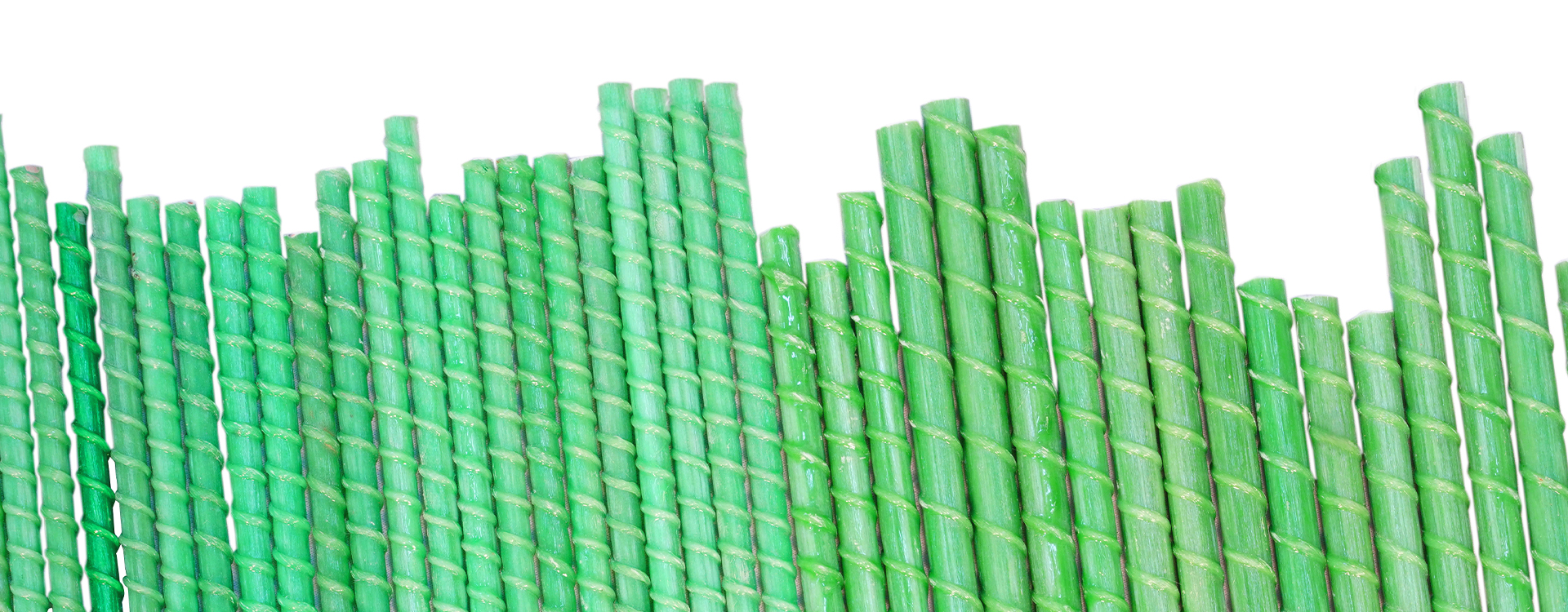
- Home
- Products
- FRP/GRP Rebar
FRP/GRP Rebar
FRP (Fiberglass Reinforced Polymer) Rebar is a spiral wrapped structural reinforcing rod made from a combination of fiberglass roving and resin. FRP Rebar has been developed as a non-corrosive alternative to steel in concrete reinforcement and is suitable for any structural or architectural application where a material that is corrosion resistant, lightweight or non-conductive is required.
Benefits Of FRP Rebar
- Lightweight/ High Strength
- High Impact Strength
- Great Flexural Strength
- Non-Corrosive
- Unsusceptible to Chemical Attack
- Electrically Non-Conductive
- Low Water Absorption
Advantages of FRP Rebar
Cost: Cost is a consistently important factor for any business. For construction, you always require the best material at alow cost. There are many materials available in the market, but GFRP Rebar is a low-cost material that provides the best quality for construction.
Temperature: This rebar can handle high-temperature stress. Such places like power stations, tunnels, mining etc., where the temperature is always high there you can use GFRP Rebar. This rebar melts at very high temperatures.
Strength: This rebar is two times stronger than steel reinforcing bars. The quality of GFRP Rebar is far better than other materials.
Weight: The weight of construction materials matters. The GFRP Rebar is ¼ of steel rebar, providing more quality than steel rebar.
FRP Rebar Vs Steel Rebar Comparison
| Specifications | Metal Class A-III | Fiberglass |
|---|---|---|
| Material | Steel | Steklorovint bound by polymer based epoxy resin |
| Strength at stretching, MPa | 390 | 1300 |
| Relative extension, % | 25 | 2, 2 |
| Coefficient thermal conductivity, W / (m0 С) | 200000 | 0, 35 |
| Elastic modulus | 200000 | 55000 |
| Linear coefficient extensions, ax 10-5 / 0С | 13-15 | 9-Dec |
| Density, t / m | 7, 8 | 1, 9 |
| Corrosion resistance to aggressive environments | Corrosive | Non-Corrosive |
| Thermal conductivity | Heat conductive | Non-conductive |
| Electrical conductivity | Electrically conductive | Non-conductive – is a dielectric |
| Released profiles | June-80 | Apr-20 |
| Length | Rods 6-12 m long | According to the buyer’s request |
| Durability | Rods 6-12 m long | According to the buyer’s request |
Usage And Applications





You're one click away from our experts
Contact Us
- Survey No. 81/82 Opp. Arvind Megapark Ashwika-3 Chacharvadi, Changodar Ahmedabad - 382210, Gujarat, India
- 08047659278
- info@plurimo.in